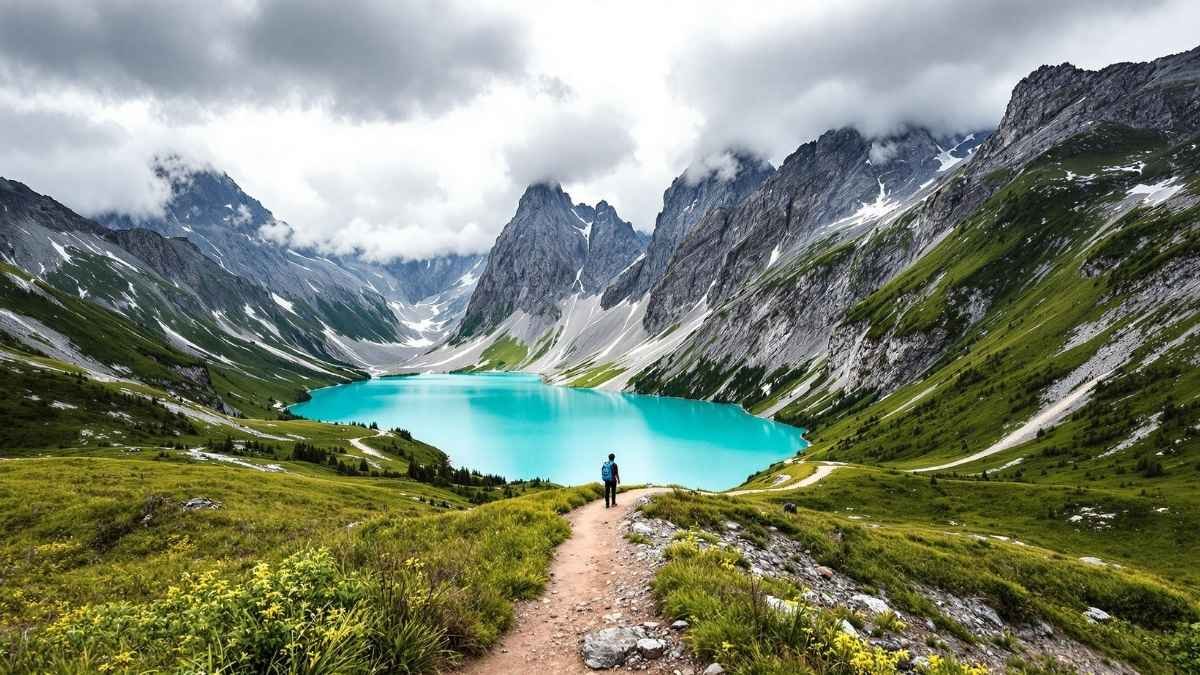
There’s something wildly freeing about stepping onto a trail where the only crowds are wind in the trees and the occasional curious deer. You don’t need a permit lottery, or six months off work to feel that kind of wilderness—just the right trail.
Some of the most jaw-dropping hikes in the U.S. are hiding in plain sight, offering the same soul-stirring views as the big-name routes, but without the pressure, red tape, or foot traffic.
This list is for the hikers who crave quiet awe, who want their boots on rugged ground and their eyes on ridgelines that feel entirely their own.
1. Beartooth High Lakes Trail, Montana
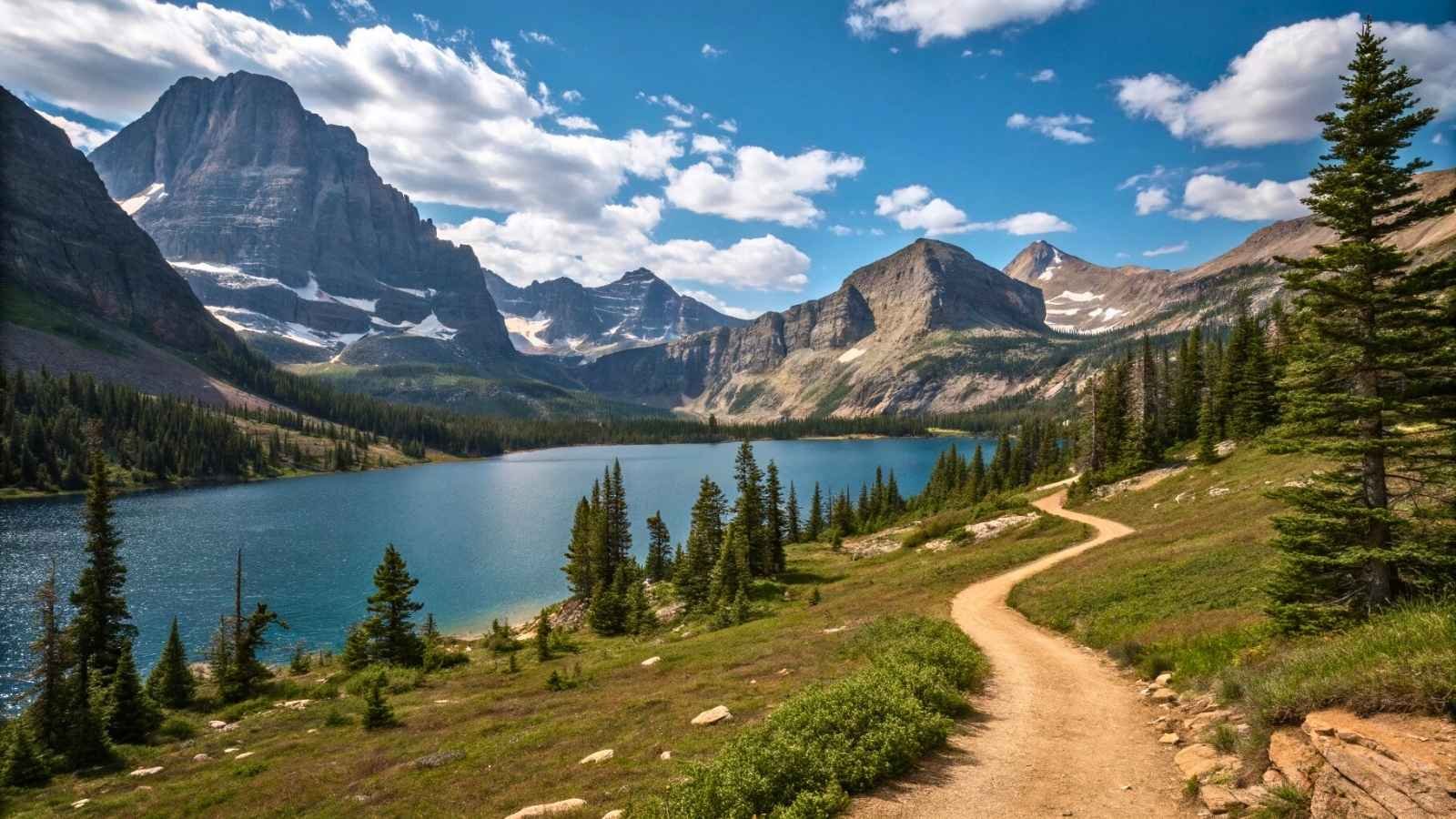
If you’re chasing those vast alpine panoramas and high-altitude solitude, the Beartooth High Lakes Trail in Montana might just be your dream trail. Tucked within the Absaroka-Beartooth Wilderness, this route leads you past sparkling glacial lakes, jagged granite spires, and meadows that seem designed for mountain goats and solitude-seekers alike. The elevation stays high—often above 10,000 feet—which means you’re breathing thin air but feasting on big views every step of the way.
What sets this trail apart is its backcountry charm with front-row beauty. You won’t need permits months in advance or shuffle between ranger stations. Instead, you’re hiking in a world that feels wild and free, where you can find your campsite near a lake that doesn’t have a name on the map. And because it’s less hyped than the PCT, you’ll likely have entire stretches all to yourself—just you, the marmots, and the wind through the whitebark pines.
The trail can be customized to your time and skill level, with multiple offshoots to even more remote high alpine lakes. This isn’t a place where you’re just passing through—it’s one you’ll carry with you for a long time.
Trail Tips:
- Best Months to Visit: July through early September
- Length: ~35 miles (varies depending on route)
- Difficulty: Moderate to strenuous (due to elevation)
- Camping: Dispersed camping is allowed throughout
- Highlights: Dozens of turquoise alpine lakes, high-altitude meadows, wildlife encounters
- Nearest Town: Red Lodge, MT
2. Four Pass Loop, Colorado
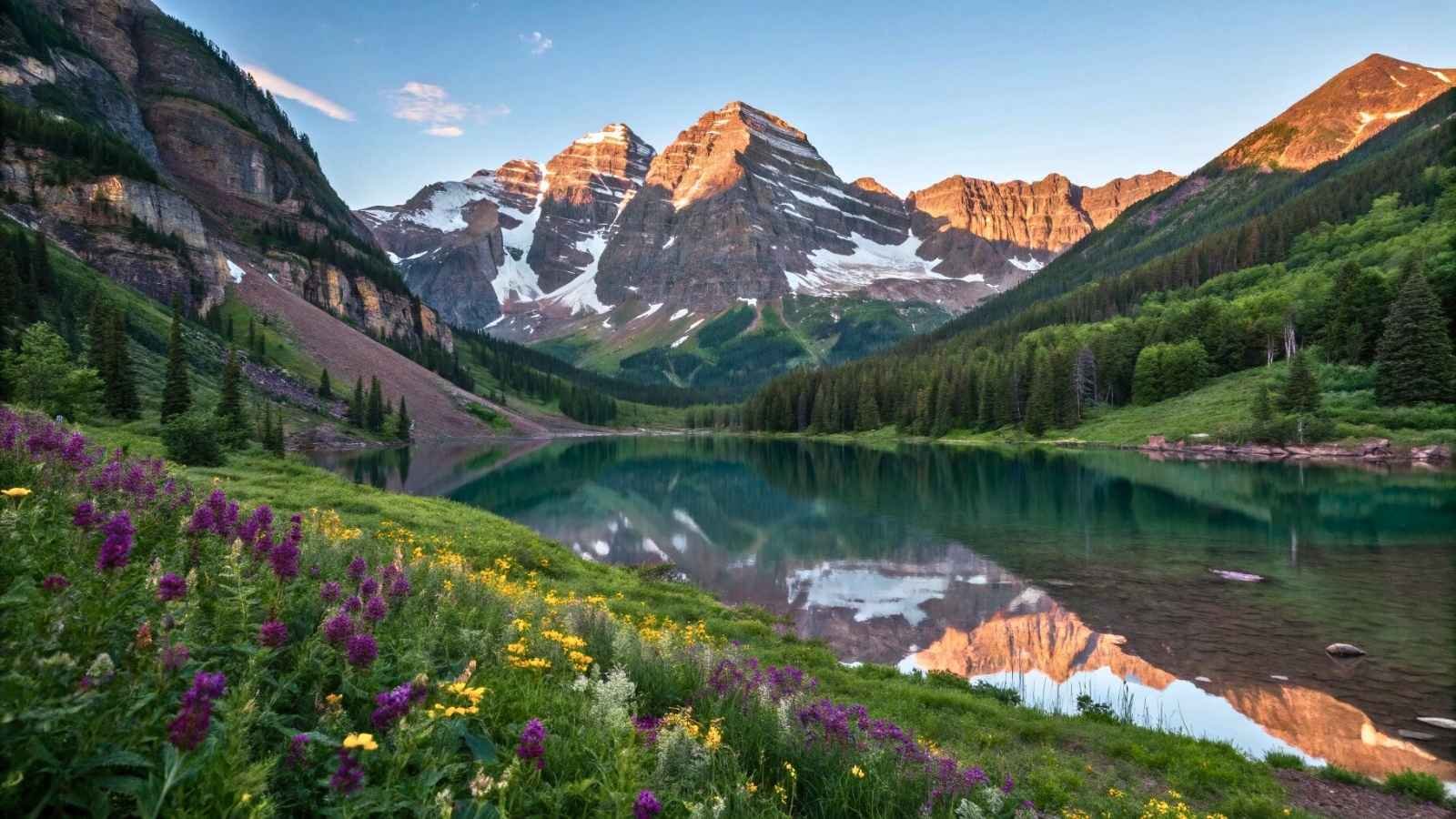
The Four Pass Loop near Aspen is the kind of trail that makes you feel small in the best way. Looping over four passes—all above 12,000 feet—it delivers knockout views of the Maroon Bells-Snowmass Wilderness, each more awe-inspiring than the last. It’s a rugged, high-alpine circuit that somehow still manages to feel graceful and photogenic with every mile.
Even though it’s relatively well-known among Colorado locals, it’s still under-the-radar compared to long-distance giants like the PCT. You don’t need a permit to backpack the loop (aside from bear canister rules), and outside of peak weekends, it’s possible to experience peaceful mornings and pristine alpine silence. Every pass rewards you with a view that could anchor a postcard—from wildflower-filled basins to snow-capped ridges rippling to the horizon.
What makes the Four Pass Loop unforgettable is its rhythm—each climb feels earned, each descent reveals something new, and somehow, it just keeps building toward better and better scenery.
Trail Tips:
- Best Months to Visit: Mid-July to early September
- Length: ~27 miles (loop)
- Difficulty: Strenuous
- Camping: Permitted with bear canister (required)
- Highlights: Maroon Bells views, alpine lakes, wildflowers, four dramatic passes
- Nearest Town: Aspen, CO
3. Timberline Trail, Oregon
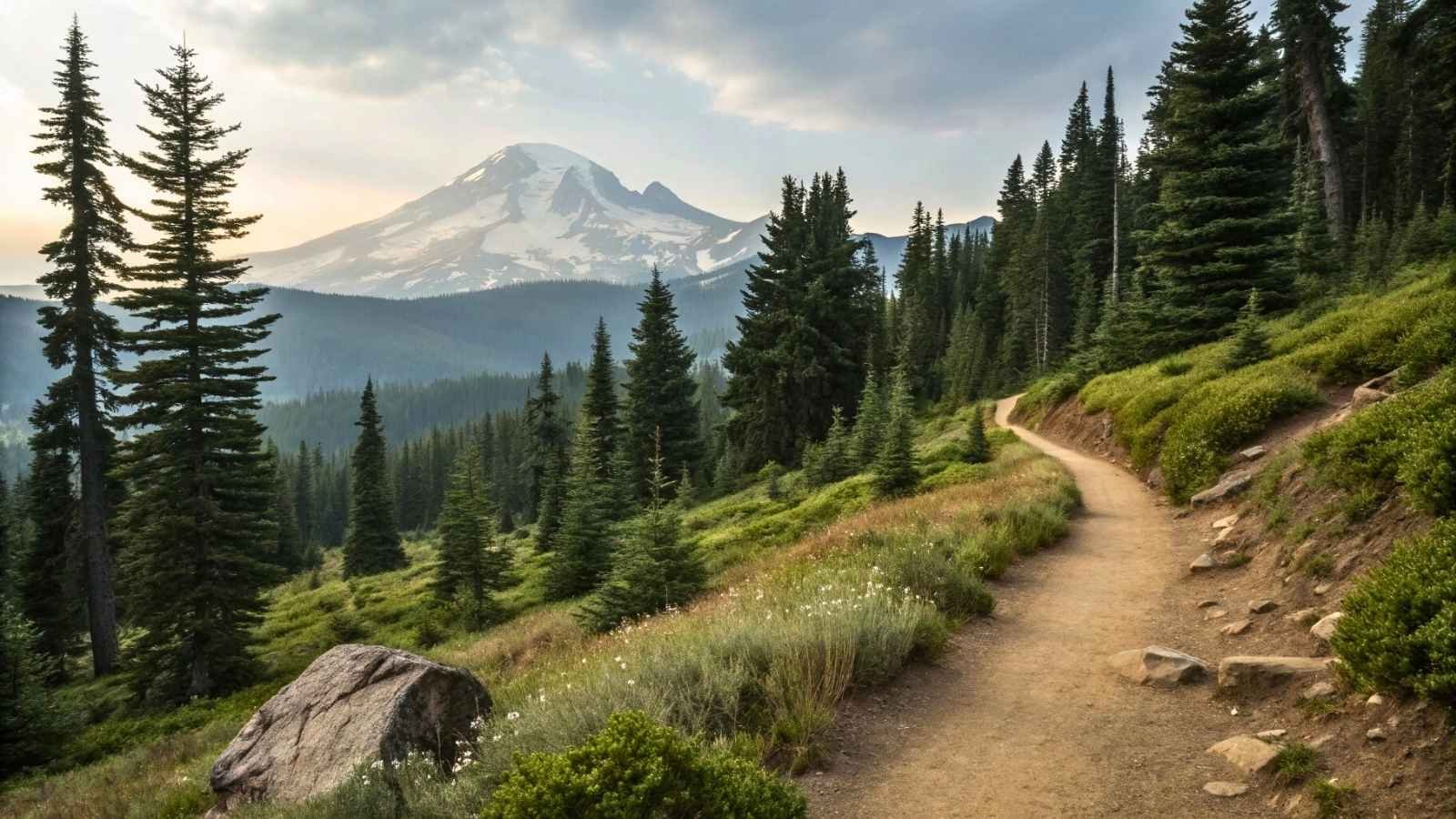
Circling Oregon’s iconic Mount Hood, the Timberline Trail might just be one of the best loop trails in the Pacific Northwest—and yet, it somehow dodges the crowds you’d expect. With waterfalls, glacial streams, rugged ridgelines, and deep forested valleys, it’s got an almost storybook variety to its scenery. Every few miles, it transforms into something new, keeping your boots and your camera busy.
The real magic? You’re always in the orbit of Mount Hood. That snow-draped giant never quite leaves your line of sight, shifting in scale and character as you work your way around. The trail also crosses a handful of meltwater-fed rivers, some of which can be intimidating after recent snowmelt, but they also add an element of true adventure to the journey.
It’s a trail where you feel like you’re doing something epic, without needing to take a month off work or win a permit lottery. And that sense of accessibility, paired with its jaw-dropping natural beauty, is what makes it so special.
Trail Tips:
- Best Months to Visit: August through September (after snowmelt)
- Length: ~41 miles (loop)
- Difficulty: Moderate to strenuous
- Camping: Permitted throughout
- Highlights: Mount Hood views, Eliot Glacier, waterfalls, alpine meadows
- Nearest Town: Government Camp, OR
4. High Sierra Trail, California

If you’ve ever wanted to experience the grandeur of the Sierra Nevada without the PCT crowd scenes, the High Sierra Trail is a masterclass in solitude and spectacle. Starting in Sequoia National Park and ending at the summit of Mount Whitney, it delivers a perfect blend of giant trees, granite cliffs, and high-altitude lakes.
What sets this trail apart is the architectural genius of the route itself—the trail was engineered to make the wild heart of the Sierras accessible without bulldozing through it. You’ll hike beneath towering granite walls, sleep beside mirror-calm alpine lakes, and finish on the highest point in the Lower 48. And while Mount Whitney usually requires a hard-to-get permit, thru-hiking the High Sierra Trail often skirts those difficulties with a bit more flexibility.
You get the drama and elevation of the John Muir Trail—but without needing to compete for trailhead quotas. It’s truly a hidden jewel carved into one of America’s most iconic mountain ranges.
Trail Tips:
- Best Months to Visit: Mid-July to early October
- Length: ~72 miles (point-to-point to Whitney Portal)
- Difficulty: Strenuous
- Camping: Backcountry permits required (easier to obtain than JMT or Whitney permits)
- Highlights: Great Western Divide, Kaweah Gap, Hamilton Lakes, Mt. Whitney
- Nearest Town: Three Rivers, CA
5. Lost Coast Trail, California
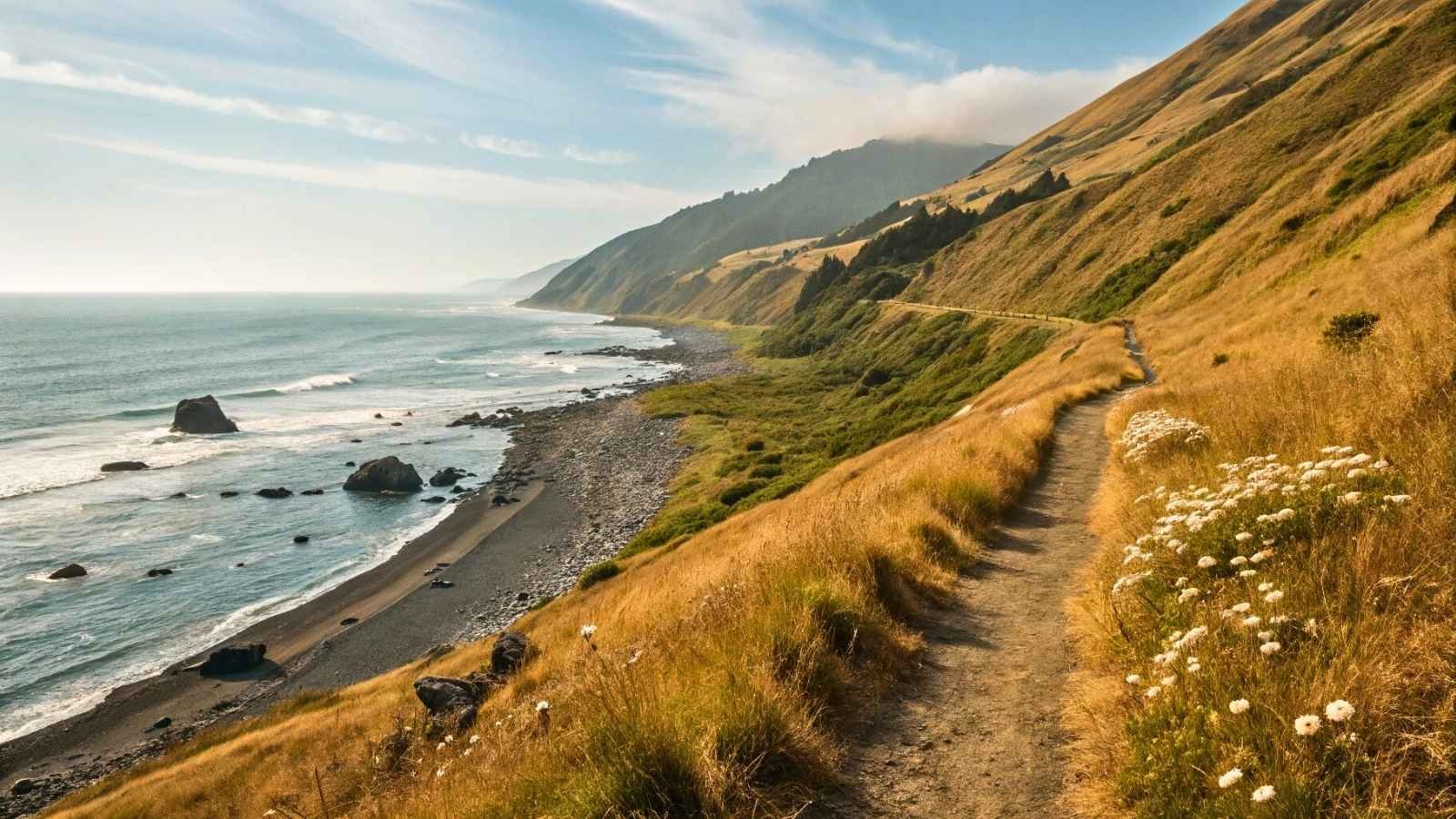
The Lost Coast Trail is one of the only trails in the lower 48 that’s truly untouched by roads for miles, where the Pacific Ocean is both your view and your challenge. Hugging California’s most rugged shoreline, this hike swaps alpine peaks for dramatic sea cliffs, black sand beaches, and tide-dependent timing. It’s wild in a way that the PCT never quite gets to be.
This is coastal backpacking at its most raw—you’re navigating tidal zones, crossing driftwood piles, and pitching your tent just yards from pounding surf. It’s not about elevation gain here; it’s about rhythm and timing with the tides. When the fog rolls in and the waves thunder against the cliffs, the trail feels like something from another world.
It’s short, it’s dramatic, and it’s a mental reset. And because it’s managed by the BLM, it often avoids the heavy permitting hoops that come with state or national parks. Just a permit request and you’re off.
Trail Tips:
- Best Months to Visit: May through September (watch tide charts!)
- Length: ~25 miles (point-to-point)
- Difficulty: Moderate, with tide challenges
- Camping: Permit required (easy to obtain); dispersed camping along the trail
- Highlights: Secluded beaches, sea lion colonies, remote cliffs, solitude
- Nearest Town: Shelter Cove, CA
6. Uinta Highline Trail, Utah
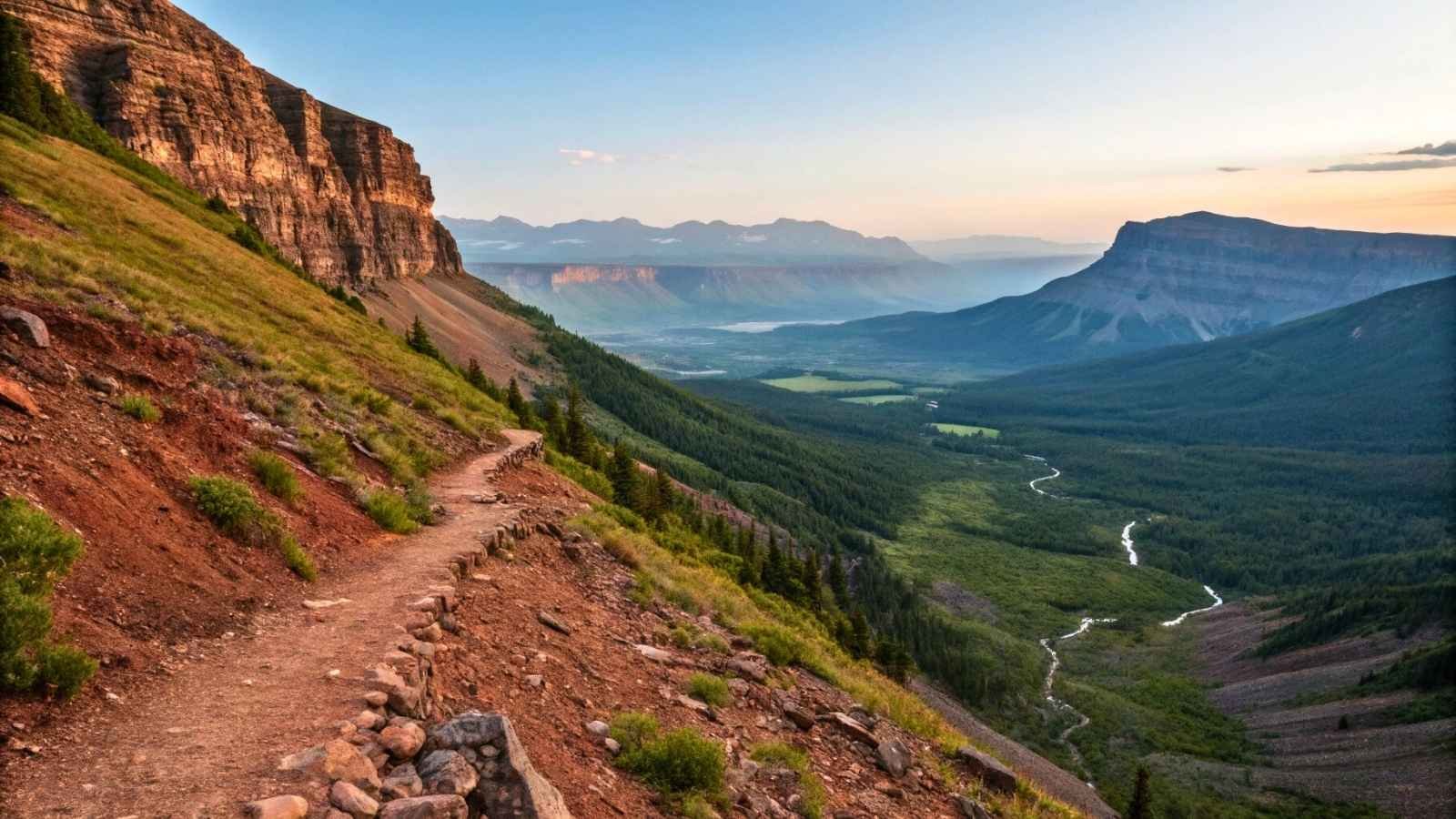
If your idea of the perfect hike is being completely immersed in the wild for days, the Uinta Highline Trail is going to deliver in spades. Running through one of the few east-west mountain ranges in North America, this trail offers a string of wind-swept passes, glacier-carved valleys, and alpine basins that seem untouched by time. The trail is rugged and remote, but that’s exactly the appeal.
This isn’t the hike for folks chasing easy wins. You’ll need to be self-sufficient, have solid navigation skills, and be ready to go a few days without seeing another human being. But in return, you get pure backcountry magic—fields of wildflowers with no footprints, reflective alpine tarns without drone sounds, and star-filled skies that feel ancient. It’s more expedition than a weekend jaunt, and it pays off in unforgettable ways.
And while parts of the PCT get clogged with Instagram traffic, the Uinta Highline remains an off-grid haven. If you’re craving solitude in a big way, this one’s your ticket.
Trail Tips:
- Best Months to Visit: July through early September
- Length: ~104 miles (point-to-point)
- Difficulty: Strenuous, with long resupply gaps
- Camping: Dispersed camping throughout
- Highlights: 13,000-foot peaks, Red Castle, solitude, remote alpine terrain
- Nearest Town: Vernal or Kamas, UT
7. Ruby Crest Trail, Nevada

It might surprise some folks, but Nevada is hiding some of the West’s best-kept alpine secrets, and the Ruby Crest Trail proves it. Winding through the Ruby Mountains, this trail delivers a dramatic mix of high ridgelines, glacier-carved lakes, and wide-open valleys. It’s a landscape you’d expect in the Rockies or the Sierra, not in the middle of the Great Basin.
One of the best things about this trail is how unspoiled it feels. You won’t be dodging crowds or following heavily eroded paths here. The terrain changes constantly—from high-elevation passes with sweeping views to lush basins filled with aspen groves and trout-filled lakes. And with very few people around, you get the space to soak it all in.
The Ruby Crest is ideal for seasoned hikers looking for something fresh—a mix of high-alpine glory and desert solitude, all packed into 30+ spectacular miles.
Trail Tips:
- Best Months to Visit: Late June through September
- Length: ~36 miles (point-to-point)
- Difficulty: Moderate to strenuous
- Camping: Dispersed camping, no permits required
- Highlights: Overland Lake, Liberty Pass, remote alpine lakes
- Nearest Town: Elko, NV
8. Wind River High Route, Wyoming
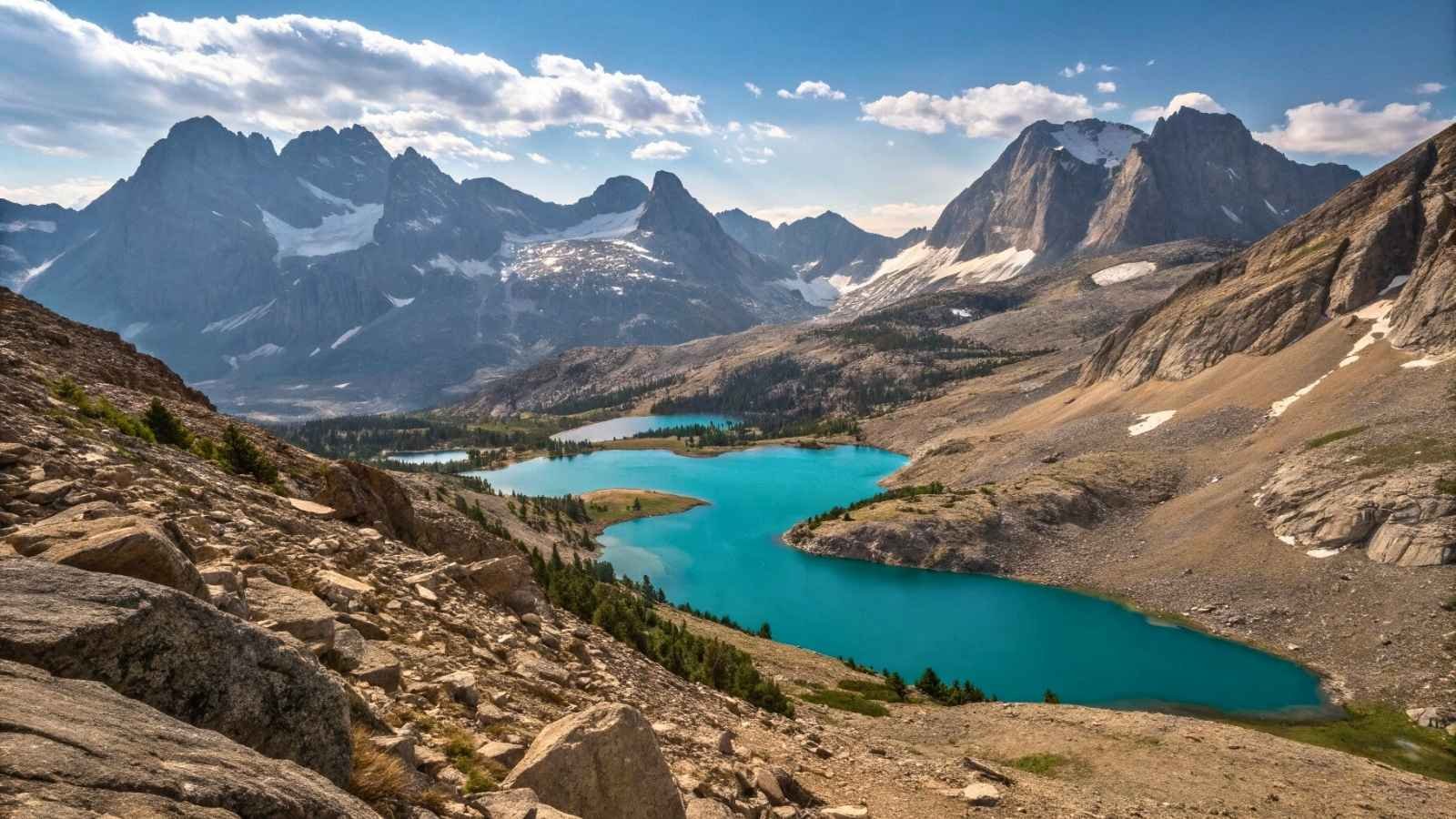
There’s something about the Wind River Range that humbles even the most seasoned hikers. The Wind River High Route doesn’t follow a traditional trail so much as it threads the needle through some of the most jaw-dropping alpine wilderness in the Lower 48. If you’ve ever longed for a high-altitude experience like the Sierra—but with a fraction of the foot traffic—this one is for you.
This is a choose-your-own-adventure kind of trek, with multiple route options depending on experience and comfort with off-trail navigation. Most routes hover above 10,000 feet, pass between granite spires, glacial lakes, and remote cirques, and require some Class 2–3 scrambling. It’s not for beginners, but it is unforgettable.
The High Route gives you that thrilling mix of remoteness, challenge, and beauty that makes you feel like you’ve stepped into the pages of a mountaineering book. And somehow, it remains largely unspoiled.
Trail Tips:
- Best Months to Visit: Late July to early September
- Length: ~80–100 miles (depending on route)
- Difficulty: Very strenuous; off-trail navigation skills required
- Camping: Wild camping is allowed throughout
- Highlights: Titcomb Basin, Knapsack Col, endless alpine lakes
- Nearest Town: Pinedale or Lander, WY
9. Eagle Cap Wilderness Loop, Oregon

Don’t let the quiet name fool you—Eagle Cap Wilderness is Oregon’s hidden crown jewel, and the classic loop through the Wallowas delivers mountain drama that most hikers never even hear about. This region offers the kind of granite peaks and aquamarine lakes that feel lifted straight from the Sierra, but with none of the traffic or red tape.
The loop trail takes you deep into the heart of the wilderness, passing through high mountain passes, sprawling meadows, and glacially carved valleys. There’s a kind of timelessness here. You’ll pass crumbling cabins from the 1800s, stumble onto a herd of mountain goats, or catch a sunset that turns the granite pink. And the trail stays consistently rewarding without requiring serious technical skills.
If you’re looking for a trail that combines beauty, solitude, and accessibility, Eagle Cap is a serious contender. It’s a place where you can fall off the grid for a few days and return feeling fully rewired.
Trail Tips:
- Best Months to Visit: July through mid-September
- Length: ~35–40 miles (loop options vary)
- Difficulty: Moderate
- Camping: Permitted throughout
- Highlights: Glacier Lake, Eagle Cap summit, alpine meadows
- Nearest Town: Joseph, OR
10. Teton Crest Trail (Non-permit Sections), Wyoming
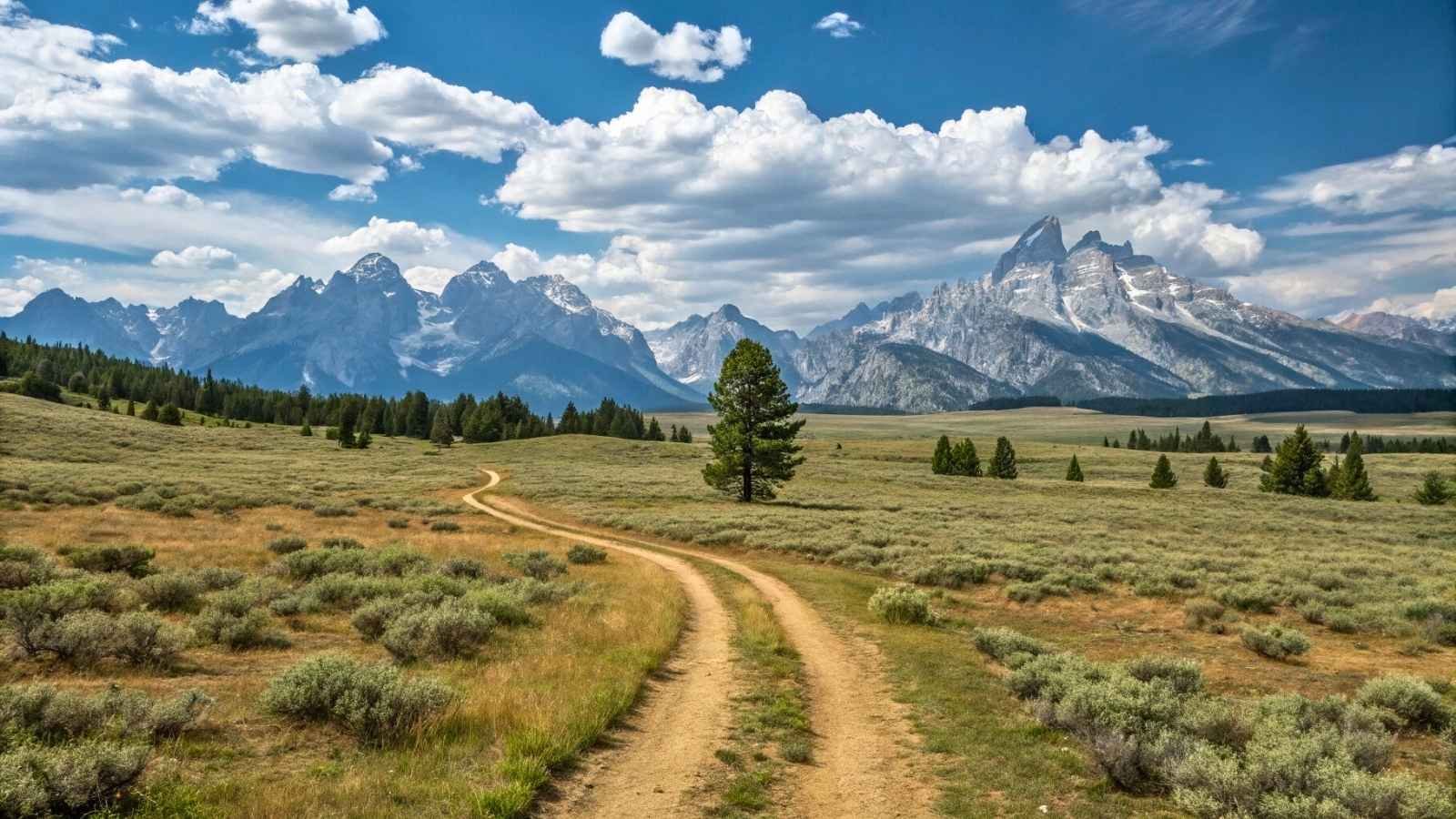
Yes, the Tetons are famous, but the Teton Crest Trail often flies under the radar because of its permit requirements. What many hikers don’t realize is that you can still hike large portions of it—or link together adjacent trails—without needing an advanced permit, especially if you avoid the national park zones or hike in shoulder season.
What makes the Teton Crest Trail so special is that it puts you on a balcony above the world. From alpine ridges, you’re treated to sweeping views of the Teton Range, with jagged peaks piercing the sky and valleys carpeted in wildflowers below. The terrain is varied, challenging, and unbelievably photogenic.
If you’re strategic, you can plan a high-mileage route that gives you 80% of the views with 0% of the permit stress. It’s a smart workaround for hikers who want Teton drama without all the logistics.
Trail Tips:
- Best Months to Visit: July through September
- Length: ~35–40 miles (depending on section)
- Difficulty: Moderate to strenuous
- Camping: Dispersed camping in national forest zones; permits are only needed inside GTNP
- Highlights: Death Canyon Shelf, Alaska Basin, Cascade Canyon overlook
- Nearest Town: Jackson, WY






